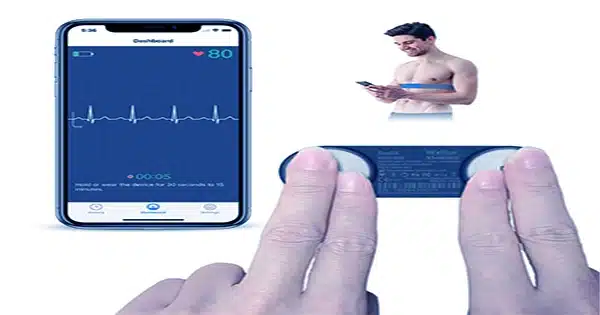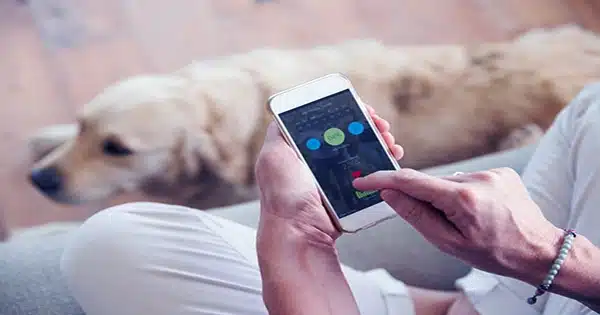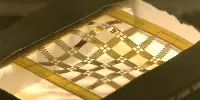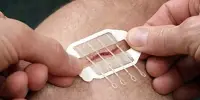Given that hypertension affects 47 percent of adults in the United States alone, keeping track of your blood pressure measurements is a good idea. And, owing to a new study from the University of California, San Diego, doing so might become far more straightforward, requiring nothing more than your phone and a $0.80 piece of plastic.
The school’s BPClip device provides readings that are roughly comparable to those obtained with a standard cuff but acts as a simple mobile phone connection. It makes use of the flashlight and the smartphone’s camera, as well as some basic physics.
BPClip is made up of two light channels: one to send a flashlight to your finger and the other to direct the reflected light to the camera for picture processing. A custom-built Android app manages data processing and walks users through the measuring procedure.

“The main motivation of this work lies in the low-cost aspect, and the main reason that we want to go in this direction is that currently there aren’t really any truly low-cost blood pressure measuring devices out there,” lead author Yinan Xuan told Ars. “All off-the-shelf ones you can get from convenience stores or drug stores are cuff devices and cost around $20 or $30, even for the cheapest ones.”
This can be a financial obstacle for low-income people who want to have their blood pressure monitored. “Worldwide, just over one-third of patients with hypertension are diagnosed and treated,” said Dr. Harriette Van Spall, an associate professor at McMaster University’s Division of Cardiology who was not involved in the study. “Those in marginalized populations, such as women, people of color, and those from low-income families, are especially vulnerable to underdiagnosis and undertreatment and could benefit from such patient-centered technologies,” she noted.
Xuan and his colleagues anticipate that if the gadget is mass-produced, it will be distributed by doctors or non-profit organizations in the same way that dentists distribute floss and toothbrushes. To that purpose, they have already established Billion Labs Inc. as a startup company to further enhance their idea.
Light at the end of the tunnel: BPClip takes readings using a simple principle: blood absorbs light. In a dark setting, if you cover your phone’s flashlight with your finger, you may notice pulsating in your illuminated finger. This is from your genuine pulse, which pushes blood through your finger’s veins and arteries—more blood (more light absorbed) when your heart contracts and less blood (less light absorbed) when your heart relaxes.
BPClip uses the phone’s camera to capture these light pulses. The app can read how much blood is flowing through your finger in real-time by simply averaging the brightness of each taken frame.
This information, however, is insufficient to calculate a blood pressure reading: BPClip must also understand how blood flow varies as pressure is applied to the finger, which is essentially the same method used by cuff-based devices to gather data.
This is when the spring of the BPClip comes into play. A variety of pressures can be given to the blood vessels in the finger by gradually compressing the spring from 0 to 100%. These pressures influence blood flow, which can be utilized to compute blood pressure values.
Consider what happens when the user presses the spring all the way down: the pressure causes the veins in the finger to close, and no blood can flow, therefore no light pulse is seen to the camera. When the user gradually releases the spring, the blood can flow again, restoring a pulse of light that the camera can detect. This is the greatest blood pressure (systolic pressure) during a heartbeat.
As the user decreases the pressure on the spring, blood may flow more freely through the finger, adjusting the amount of light reflected. When the pressure on the finger is no longer enough to obstruct the flow of blood, the reflected light becomes a constant pulse. The diastolic pressure is the lowest pressure experienced during a heartbeat.
BPClip can determine the user’s systolic and diastolic blood pressures by measuring blood flow at different compression levels and comparing those data to the force exerted on the finger. This begs the question of how the system determines how much force the BPClip is exerting.
Under pressure: BPClip leverages simple physics to monitor finger pressure without the usage of any electronic components. The reflected light from the finger goes through a pinhole before reaching the camera. This means that the light received by the camera is a pinhole projection whose size fluctuates depending on how far the finger is from the pinhole. The size of the image can be used to calculate the amount of pressure on the finger if the exact stiffness of the spring is known.
In addition, the software enables BPClip to do internal calibration prior to each measurement. BPClip can register the intrinsic light reflection of the finger by measuring the brightness of the reflection at maximum and minimum spring compression. This can be deducted from subsequent measurements, implying that the final figures exclusively pertain to blood flow. This approach can adjust for differences in flash brightness, skin tones, and overall blood volume.
The ability to independently measure pressure distinguishes BPClip from the competition. The concept of a wearable blood pressure monitor is not novel—there are numerous prototypes available that use a variety of methods to compute blood pressure. The main obstacle that has kept them from becoming widely used is the requirement for external calibration against a cuff-based device, as they employ indirect measures to determine blood pressure. Devices that estimate blood pressure using a metric known as pulse transit time require periodic, rather than one-time, external calibration. This is due to the model’s inability to account for changes in arterial elasticity observed throughout aging and disease.















